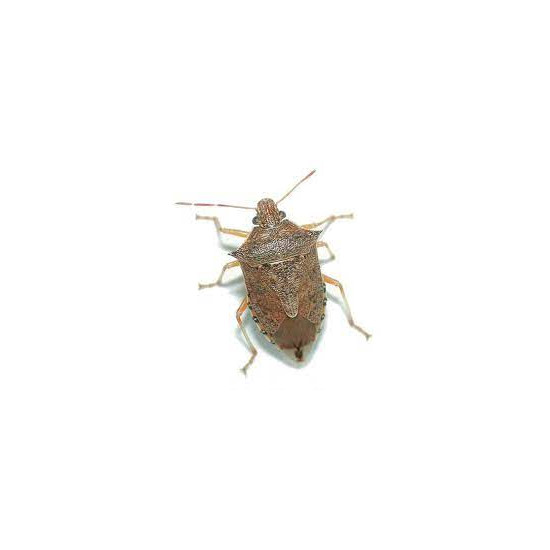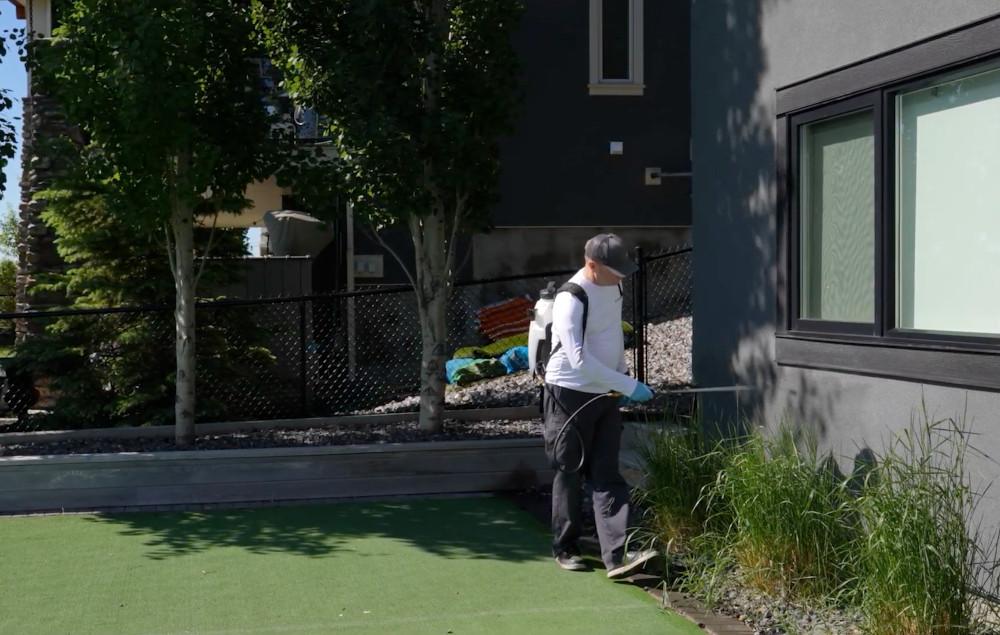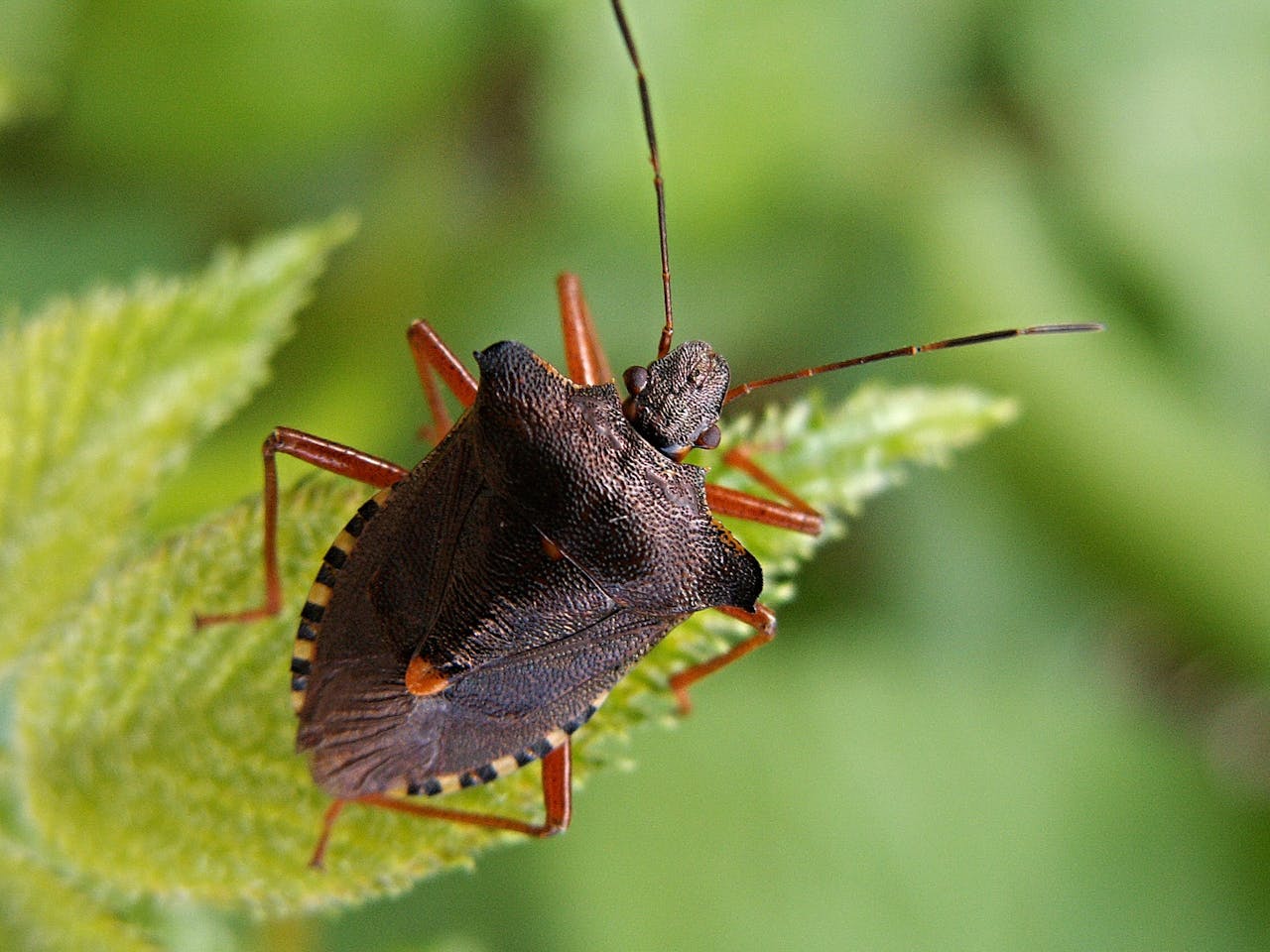Stink Bug
Stink bugs are shield-shaped insects known for their ability to emit a foul odor when threatened, often invading homes during colder months.

Stink bugs are shield-shaped insects known for their ability to emit a foul odor when threatened, often invading homes during colder months.

Safe for the whole family
Over 10,000 pest-free homes
Year-round protection and availability
Stink bugs are typically ¾ inch (19 mm) long and have a shield-like shape with a brownish or grayish-green color. Their bodies are flat and their legs are long and slender, with distinctive triangular markings on their back.

Stink bugs are notorious for their strong odor, which they release as a defense mechanism when threatened. This odor is unpleasant and can linger in indoor spaces, making them particularly bothersome when they invade homes. While they don’t cause damage to structures, their presence is disruptive and can be difficult to ignore.
These pests are primarily plant-feeding insects, with a preference for fruits, vegetables, and ornamental plants. Stink bugs use their piercing-sucking mouthparts to feed on plant juices, which can lead to cosmetic damage to crops and gardens. However, stink bugs do not bite or sting humans.
During the fall, stink bugs begin to search for shelter from the cold and often enter homes through cracks around windows, doors, and vents. Once inside, they can cluster in warm, sunny spots such as windowsills or attic spaces. While they may seem harmless, they can become a nuisance if left unchecked.
To prevent stink bugs from entering your home, it is essential to seal all cracks and gaps around windows, doors, and foundations. Installing tight-fitting screens on windows and vents can also help keep them out. If stink bugs become an issue inside, Avayda Pest Control provides effective pest control services to manage and eliminate infestations.
At Avayda, we know that you want a pest free home, regardless of the time of year. In order to do that, you need the right team and products to help remove invaders and keep them out for good. The problem is you’ve tried to solve it yourself, or you don’t have the time, and they keep coming back. Ultimately, you’re afraid they’ll never go away.
Everyone deserves a pest-free home. And we understand that your home has to be safe for you and your family. Free from any kind of insect, pest, or unwanted guest. We’ve helped create pest-free homes for 10,000+ customers, and we’re ready to help. We offer year-round pest services with safe products for the whole family and a guarantee that they’ll be out of your house for good.

Stink bugs are an increasingly common household nuisance, especially during the fall when they start to look for warm places to overwinter. While they’re not harmful to humans or pets, their unpleasant odor and tendency to gather in large numbers make them unwelcome guests in homes across North America.
The most common species in Canada and the U.S. is the Brown Marmorated Stink Bug (Halyomorpha halys). Originally from Asia, this invasive pest has spread rapidly in recent years, becoming a major agricultural and indoor pest.
In this guide, we’ll cover how to identify stink bugs, understand their behavior, and take effective steps for stink bug prevention and control.

Stink bugs are not dangerous in the traditional sense. They don’t bite, sting, or cause structural damage.
However, they can be a significant annoyance due to:
While not harmful, their presence indoors can quickly become overwhelming if not managed properly.
Stink bugs are primarily outdoor insects, but they enter homes in the fall for one reason — warmth. Once inside, they look for quiet, protected spaces to spend the winter. You may find them:
They don’t reproduce indoors or feed on anything inside your home — but their sheer numbers and persistent appearances make them a frustrating pest.
Crushing stink bugs releases their signature odor. Instead, capture and release them outdoors, or use a vacuum (with a disposable bag) to remove them without making a mess.
In early fall, inspect and seal areas where stink bugs can enter:
Use silicone-based caulk and weather stripping to block all possible access points.
Repair or replace torn window screens and install door sweeps to prevent bugs from slipping in through gaps under doors.
Sticky traps and light traps placed near windows or in attics can help catch wandering stink bugs indoors.
In cases of large infestations, a licensed pest control technician can apply a perimeter insecticide treatment to the exterior of your home to reduce entry during peak migration periods in the fall.
Prevention is the most effective long-term strategy for dealing with stink bugs. Here’s what you can do:
If stink bugs have invaded your home in large numbers, or you’ve experienced repeat issues year after year, it may be time to bring in professional pest control. A licensed technician can provide:
While stink bugs don’t pose a health risk, they can be a frustrating presence in homes — especially in fall and winter. With the right combination of sealing entry points, using traps, and taking preventive steps before the weather turns cold, you can keep these odorous invaders out where they belong.
Avayda Pest Control offers seasonal stink bug control services and customized prevention plans. Contact us today to schedule a fall inspection and prepare your home for pest-free living.